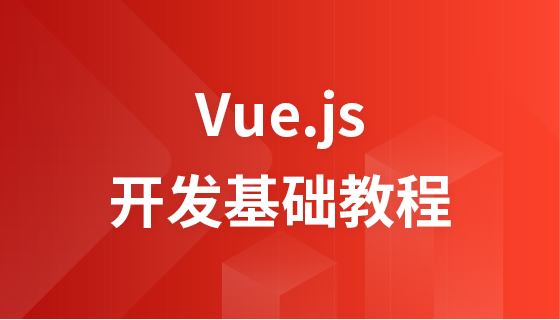
如何开发一个自动生成问答系统的WordPress插件
简介:
在现代互联网时代,问答网站变得越来越受欢迎。为了满足用户对问题和答案的需求,本文将介绍如何开发一个自动生成问答系统的WordPress插件。通过这个插件,您可以方便地创建一个问答平台,使您的网站更加交互和具有吸引力。
步骤一:创建一个自定义的资料类型(Post Type)
在WordPress中,自定义的资料类型是一种可以扩展默认的文章和页面的功能。我们需要创建一个名为“Question”的自定义资料类型。
function create_question_post_type() {
$labels = array(
'name' => 'Questions',
'singular_name' => 'Question',
'add_new' => 'Add New',
'add_new_item' => 'Add New Question',
'edit_item' => 'Edit Question',
'new_item' => 'New Question',
'view_item' => 'View Question',
'search_items' => 'Search Questions',
'not_found' => 'No questions found',
'not_found_in_trash' => 'No questions found in trash',
'parent_item_colon' => '',
'menu_name' => 'Questions'
);
$args = array(
'labels' => $labels,
'public' => true,
'has_archive' => true,
'rewrite' => array('slug' => 'questions'),
'supports' => array('title', 'editor', 'author')
);
register_post_type('question', $args);
}
add_action('init', 'create_question_post_type');步骤二:创建问题和答案的元字段(Meta Fields)
我们需要为问题和答案添加一些额外的信息字段,例如问题的类别、答案的作者等。通过添加元字段,我们可以在编辑问题和答案时添加和管理这些额外的信息字段。
function add_question_meta_fields() {
add_meta_box('question_category', 'Category', 'question_category_callback', 'question', 'side', 'default');
}
function question_category_callback($post) {
$value = get_post_meta($post->ID, 'question_category', true);
echo '<input type="text" name="question_category" value="' . esc_attr($value) . '" />';
}
function save_question_meta_fields($post_id) {
if (array_key_exists('question_category', $_POST)) {
update_post_meta(
$post_id,
'question_category',
sanitize_text_field($_POST['question_category'])
);
}
}
add_action('add_meta_boxes_question', 'add_question_meta_fields');
add_action('save_post_question', 'save_question_meta_fields');步骤三:创建问答系统模板
我们需要创建一个问答系统的模板,用于显示问题和答案。我们可以使用WordPress的模板文件(例如single-question.php)来实现这一点。
<?php /* Template name: Question Template */ ?>
<?php get_header(); ?>
<div id="primary">
<main id="main" class="site-main" role="main">
<?php while (have_posts()): the_post(); ?>
<article id="post-<?php the_ID(); ?>" <?php post_class(); ?>>
<header class="entry-header">
<h1 class="entry-title"><?php the_title(); ?></h1>
</header>
<div class="entry-content">
<?php the_content(); ?>
</div>
<?php $answers = get_post_meta(get_the_ID(), 'answers', true); ?>
<?php if (!empty($answers)): ?>
<section class="answers">
<h2>Answers</h2>
<ul>
<?php foreach ($answers as $answer): ?>
<li><?php echo $answer; ?></li>
<?php endforeach; ?>
</ul>
</section>
<?php endif; ?>
</article>
<?php endwhile; ?>
</main>
</div>
<?php get_sidebar(); ?>
<?php get_footer(); ?>步骤四:创建问答提交和显示表单
我们需要创建一个前端表单,用户可以通过该表单提交问题和答案,并将其保存到数据库中。然后,我们需要在模板中显示这些问题和答案。
function question_form_shortcode() {
ob_start(); ?>
<form id="question-form" method="post">
<label for="question-title">Question Title</label>
<input type="text" id="question-title" name="question-title" required>
<label for="question-content">Question Content</label>
<textarea id="question-content" name="question-content" required></textarea>
<label for="answer-content">Your Answer</label>
<textarea id="answer-content" name="answer-content" required></textarea>
<input type="submit" value="Submit">
</form>
<?php return ob_get_clean();
}
add_shortcode('question_form', 'question_form_shortcode');
function save_question_and_answer() {
if (isset($_POST['question-title']) && isset($_POST['question-content']) && isset($_POST['answer-content'])) {
$question_title = sanitize_text_field($_POST['question-title']);
$question_content = wp_kses_post($_POST['question-content']);
$answer_content = wp_kses_post($_POST['answer-content']);
$question_id = wp_insert_post(array(
'post_title' => $question_title,
'post_content' => $question_content,
'post_type' => 'question',
'post_status' => 'publish'
));
$answers = get_post_meta($question_id, 'answers', true);
$answers[] = $answer_content;
update_post_meta($question_id, 'answers', $answers);
}
}
add_action('init', 'save_question_and_answer');结论:
通过本文的指导,您可以开发一个自动生成问答系统的WordPress插件。这个插件可以帮助您方便地创建一个问答平台,增加互动性和吸引力。您可以根据自己的需求添加其他功能和定制样式,以满足您的用户和网站的需求。祝您开发成功!
以上是如何开发一个自动生成问答系统的WordPress插件的详细内容。更多信息请关注PHP中文网其他相关文章!


![PHP实战开发极速入门: PHP快速创建[小型商业论坛]](https://img.php.cn/upload/course/000/000/035/5d27fb58823dc974.jpg)

